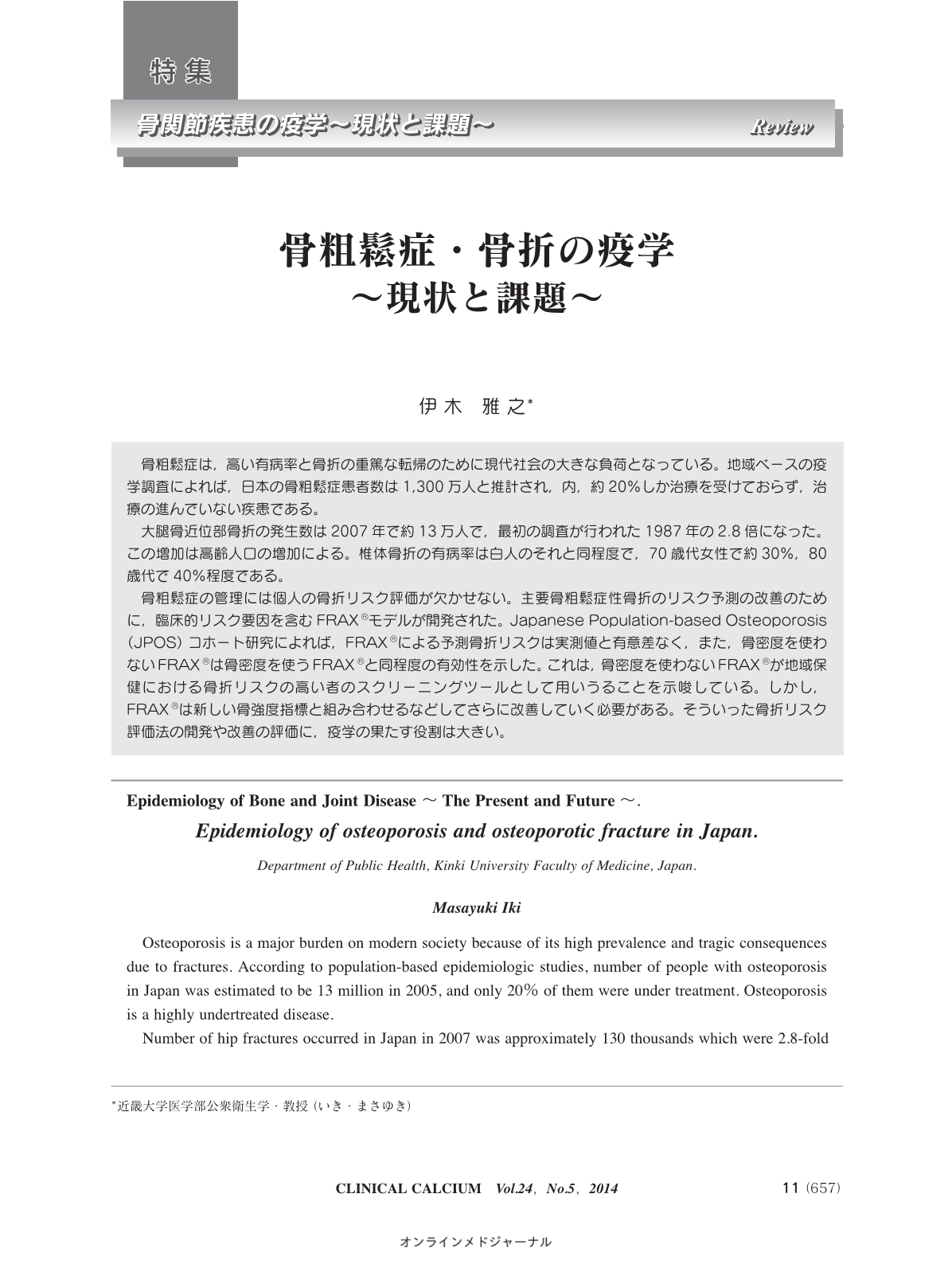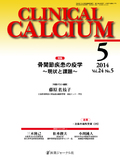Japanese
English
- 有料閲覧
- Abstract 文献概要
- 1ページ目 Look Inside
- 参考文献 Reference
骨粗鬆症は,高い有病率と骨折の重篤な転帰のために現代社会の大きな負荷となっている。地域ベースの疫学調査によれば,日本の骨粗鬆症患者数は1,300万人と推計され,内,約20%しか治療を受けておらず,治療の進んでいない疾患である。 大腿骨近位部骨折の発生数は2007年で約13万人で,最初の調査が行われた1987年の2.8倍になった。この増加は高齢人口の増加による。椎体骨折の有病率は白人のそれと同程度で,70歳代女性で約30%,80歳代で40%程度である。 骨粗鬆症の管理には個人の骨折リスク評価が欠かせない。主要骨粗鬆症性骨折のリスク予測の改善のために,臨床的リスク要因を含むFRAX®モデルが開発された。Japanese Population-based Osteoporosis(JPOS)コホート研究によれば,FRAX®による予測骨折リスクは実測値と有意差なく,また,骨密度を使わないFRAX®は骨密度を使うFRAX®と同程度の有効性を示した。これは,骨密度を使わないFRAX®が地域保健における骨折リスクの高い者のスクリーニングツールとして用いうることを示唆している。しかし,FRAX®は新しい骨強度指標と組み合わせるなどしてさらに改善していく必要がある。そういった骨折リスク評価法の開発や改善の評価に,疫学の果たす役割は大きい。
Osteoporosis is a major burden on modern society because of its high prevalence and tragic consequences due to fractures. According to population-based epidemiologic studies, number of people with osteoporosis in Japan was estimated to be 13 million in 2005, and only 20% of them were under treatment. Osteoporosis is a highly undertreated disease. Number of hip fractures occurred in Japan in 2007 was approximately 130 thousands which were 2.8-fold greater than those in 1987. This increase can be explained by an increase in the elderly population. Prevalence rate of vertebral fracture was reported to be approximately 30% in women aged 70s and 40% in those aged 80s. Fracture risk assessment in individuals is essential for osteoporosis management. To improve prediction accuracy for major osteoporotic fractures, FRAX® model including clinical risk factors was developed. Predicted risk of major osteoporotic fractures for Japanese women by FRAX® were not significantly different from observed risk in the Japanese Population-based Osteoporosis(JPOS)Cohort Study, and FRAX® model without bone mineral density(BMD)showed a similar validity to FRAX® model with BMD. This suggests that FRAX® without BMD may be used as a screening tool for people at increased risk of fractures in community. However, FRAX® should be improved further in combination with new bone strength indices. Epidemiology should play a great role in developing and evaluating such improvement in fracture risk assessment.



